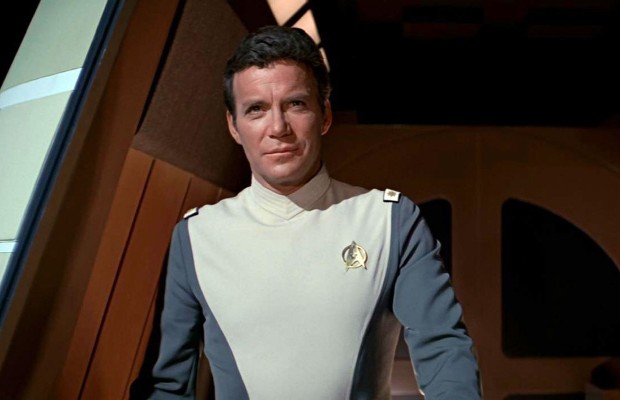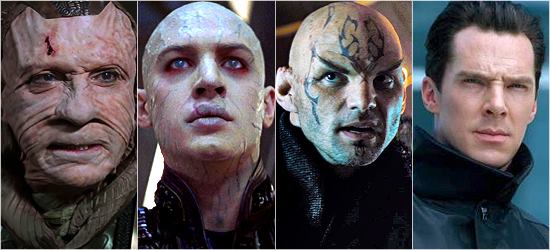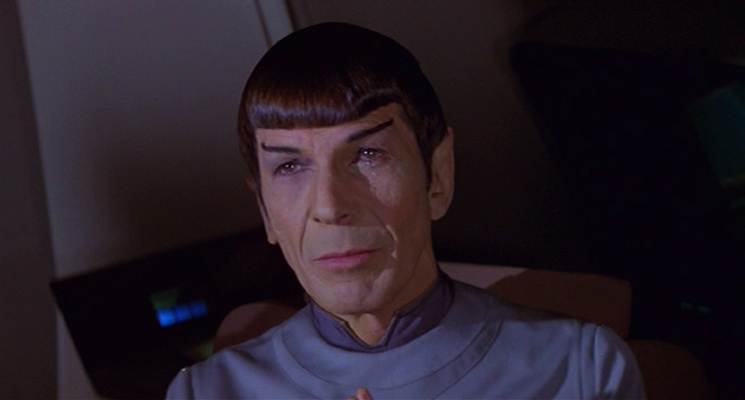Star Trek 2016 and Beyond: What Future Trek Can Learn from The Motion Picture

With the impending release of next year’s Star Trek Beyond, written by Simon Pegg (who plays the new universe’s Montgomery Scott) and veteran writer Doug Jung and directed by Justin Lin (of Fast and the Furious fame), this makes it the ideal time to revisit the film that started it all as well as examine what the new movie could learn from TMP.
Star Trek: The Motion Picture was created in large part based off the first attempt to bring back the property to television in a live-action sense, known as Phase II. Excluding The Animated Series, which ran from 1973 to 1974, as well as the first aborted attempt to bring Star Trek back to the big screen (under the project title of “Star Trek: Planet of the Titans”), production on the Phase II television series began in mid-1977 with a target premiere date sometime in 1978. However, with the unexpected and overwhelming success of Star Wars, Paramount decided to transform Phase II into a full-blown theatrical release. It is interesting to note that the pilot episode of Phase II called “In Thy Image” would serve as the backbone for the screenplay for The Motion Picture.
When The Motion Picture was released in 1979, there was a sense of great anticipation. Trek had not been back in live-action format in a decade since The Original Series was cancelled after its third season in 1969. In this regard, the current state of the franchise is not similar, after all. The last movie to be released was just two years ago with Star Trek Into Darkness with Star Trek Beyond slated for 2016. However, there is a similarity between the anxiousness that permeated the lead-up to the release of TMP and now for Star Trek Beyond.
What do I mean by anxiousness? On the one hand, the anxiousness during TMP’s time was driven solely by the fact that the franchise had been out of a live-action format for a decade. Sure, there was The Animated Series, but that could never be the same, could it? The pent-up demand was palpable. In 2015, the anxiousness is derived from something else. The best word I can use to describe it is trepidation, that murky line between cautiously optimistic and mildly ambivalent. The new movies have been polarizing to fans, with 2013’s Into Darkness arguably being even more divisive than the first. The production history for the 2016 movie has been fraught with massive directorial and writing changes (with Roberto Orci dropping out as writer and director to be replaced with Justin Lin as director and Simon Pegg as both actor and co-writer with Doug Jung).
Recent acknowledgements from Pegg that the script is still being rewritten and worked on with only about a year left until the film’s release, in addition to concerns from Paramount Studios that previous scripts were too “Star Trek-y” have left some fans wondering: “Just what is the direction of the franchise? Is there a larger vision and is that larger vision even worth pursuing?” This is only made more poignant with 2016 marking Star Trek’s 50th anniversary and the fact that, as for right now, the JJ-verse movies are the only iteration of Trek being made. Thus with this current backdrop as context, I think it’s incredibly worthwhile to look to TMP for inspiration and insight.
I recently re-watched The Motion Picture, both the cinematic release on Blu-Ray as well as the Director’s Cut (which was sadly not produced at the time in a way that would have made it easy to restore to HD). And for the benefit of full disclosure, I’ve always been an ardent TMP partisan and my belief in the strengths of this movie are only reinforced after my recent re-watches.
Borne out of a time when Close Encounters of the Third Kind and 2001: A Space Odyssey were big hits with audiences, The Motion Picture has always had a different visceral feel than any of the successive Trek films. And I don’t merely mean on a purely aesthetic level either, although that plays a significant role (for the record, I’ve always been a big defender of the TMP uniforms, monochromatic color schemes and all). What I mean is that from the very opening scene, with the triumphant score that would later be appropriated by The Next Generation, this movie conveyed a sense of ambition and scale that continues to be unique to this day.
Everything seemed bigger. We got our first glimpse of what Earth looked like in the 23rd century, and that opening shot of the Golden Gate Bridge and Starfleet Command (including the extended take that was included in The Director’s Cut) was magnificent. Even the Enterprise seemed more majestic. The scene where Admiral Kirk is briefing the crew in the recreation deck creates such a large perception of scale that is never really matched in any other movie, or series, for that matter. The ship seemed massive and the crew complement huge and vibrant, with diverse ethnicities and races both humanoid and non-humanoid. Truth be told, no starship crew in any subsequent Trek iterations would never appear more grandiose or as teeming with life than it did in that scene. This visual motif would be continued in how the very concept of jumping to warp speed would be portrayed. We’ve often become accustomed to our various starships performing feats of faster-than-light travel and “hopping galaxies” (as Bones would put it in The Wrath of Khan) as being very ho-hum, banal, and perfunctory. But I’ve always loved the fact that TMP portrayed warp travel as still being unpredictable and fraught with unseen danger, even in this grand future.
But the most important lesson to be learned from TMP is the sense of exploration and examination of the human condition that it engendered. To be sure, Kirk’s mission aboard the Enterprise to intercept the alien probe, V’ger, was not intended as a peaceful exploratory mission. Rather, it was to intercept and neutralize at all costs a hostile and implacable force (this is another point where the Director’s Cut shines, it reintroduces a scene where Kirk orders Scotty to self-destruct the Enterprise in case their efforts to communicate with the probe fail). But this mission belied a deeper and more resonant message when it was revealed that the probe itself was of human origin. Everyone who has seen the movie (and arguably even those who haven’t) know how important that twist is. The fact that V’Ger is in fact one of the Voyager probes (albeit the fictional Voyager 6) and that it has come back to Earth, not to harm it, but to learn from its creator why it was sent out in the first place, hits so many resonant notes on the nature of exploration and the human condition itself. It dares to ask questions that explore the concept of emergent consciousness, the limitations of cold programming and calculation, the contradictory uniqueness embodied by the human mind which inhabits both a place of emotion and logic, and how all of these things can and must be explored by a consciousness not solely defined as organic or inorganic. Indeed, the most moving moment for me is actually a scene that was cut from the original theatrical version. Restored in the Director’s Cut, it involves Spock crying on behalf of V’Ger. He explains to Kirk why: “I weep for V’ger as I would for a brother. As I was when I came aboard, so is V’Ger now. Empty. Incomplete. Searching. Logic and knowledge are not enough.”
So how does this apply to next year’s movie and to the state of the franchise as a whole moving forward? I think it’s absolutely critical that any future Trek movie restore that same sense of wonder, scale, and exploration that was so prevalent throughout TMP, as well as its study and examination of the human condition. To be sure, The Motion Picture wasn’t a perfect movie, but insofar that it captured these elements, the movie was resoundingly successful and it’s something that fans are beginning to appreciate more and more. I would also suggest that the decentralized and de-personified nature of V’ger is refreshing and suggests a model for future films. The past four movies (Into Darkness, Star Trek ’09, Nemesis, and Insurrection) all have featured a villain, obsessed with revenge, commanding an imposing ship that the Enterprise crew has to valiantly blow up in order to save the day. Indeed, there hasn’t been a movie without a headlining “main threat bad guy” since The Voyage Home. This is not to say that villains don’t have a role in Trek: I personally loved Ricardo Montalban as Khan, Christopher Plummer as Chang, and Alice Krige as the Borg Queen. But is it possible for us to formulate an idea for Star Trek that doesn’t always necessitate such a trope? That doesn’t necessitate a huge space battle, whiz-bang explosions, and a dead villain as the only outcome of our heroes succeeding? The recent commercial and critical success of movies like Gravity and Interstellar strongly suggest that not only is this possible, but for a franchise like Star Trek, it is absolutely necessary.

(from
left to right) Ru’afo from Insurrection, Shinzon from Nemesis, Nero
from Star Trek ’09, and John Harrison / Khan from Into Darkness
In the end, despite the despondence or fear that some fans have about next year’s movie, I’m actually optimistic for Trek’s future. Star Trek has endured its high and lows, its peaks and valleys, its eras of green verdant growth and harsh dry drought. Despite the absence of Trek on television (where it excels the most) and the fan reticence towards the new studio movie, Star Trek still thrives. Why? Without a doubt, it’s because of the dedicated fanbase that has kept the franchise alive through periods of famine and feast. Even now, we are experiencing a veritable renaissance of fans films and independent productions, in the form of Axanar, New Voyages / Phase II, Star Trek Continues, and many others. Indeed, the success of these fan films and independent productions speak to the vitality of Star Trek and arguably to the existence of unmet demand that is not being satisfied from the new movies. Indeed, it is quite telling that on the eve of Star Trek’s 50th anniversary next year in 2016, there has been no discernible effort by the studio to commemorate the anniversary or celebrate the franchise in a way that has been done for Doctor Who’s 50th anniversary in 2013 or with Star Wars’ impending return to the big screen in December 2015. Rather, it seems that it is the fan-driven and independently created work and not the “official” studio-sanctioned content, which is driving the majority of fan enthusiasm these days.
This ultimately brings us full circle. Whether it’s a television series, a Paramount produced movie, or a fan / independent production, Star Trek is at its best when it can combine action, adventure, drama, humor, moral and socio-political allegory into a richer milieu about the human condition. With a return to its exploratory roots, Star Trek can recapture that palpable sense of excitement and wonder that fans once had in the summer of 1979. TMP at its heart is about the human condition and in this fan’s humble opinion, any future iteration of Trek can only be well-served by learning from The Motion Picture that started it all.
Will Nguyen lives in the Boston area. You can tweet him at @Will_Nguyen. He’s also the co-host for Warp 5, a weekly Enterprise show on Trek.fm, a dedicated podcast network that talks about every aspect of the Trek universe from television, the movies, literature, and everything in between.





No hay comentarios:
Publicar un comentario